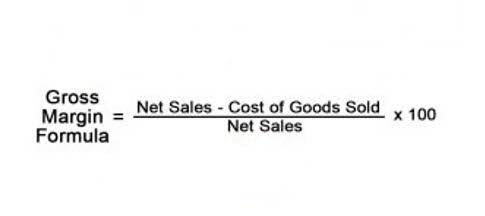The 8 Steps in the Accounting Cycle

The first step of the accounting cycle is to analyze business transactions and the relevant source documents. Before we record any transactions, an accountant or bookkeeper https://stmichaelsschooldgp.in/2022/12/09/how-does-the-accountant-hub-work-freshbooks/ needs to analyze those transactions first. This analysis is done by looking at the source documents. They must look at the nature of each transaction and how to record it. A trial balance is a summary of all the accounts in the ledger and their balances.
Step 6: Record the transaction in the journal
Returning to Supreme Cleaners, Mark identified the accounts needed to represent the $200 sale and recorded them in his journal. He will then take the account information Mental Health Billing and move it to his general ledger. All of the accounts he used during the period will be shown on the general ledger, not only those accounts impacted by the $200 sale. The balance sheet is a depiction of the financial position of the business entity. It displays the assets owned by the entity, liabilities owed to creditors, and owner’s capital/equity at the date of its preparation.
Step 1: Identify and Analyze Transactions

Ever dream about working for the Federal Bureau of Investigation (FBI)? As a forensic accountant, that dream might just be possible. A forensic accountant investigates financial crimes, such as tax evasion, insider trading, and embezzlement, among other things. Forensic accountants review financial records looking for clues to bring about charges against potential criminals. They consider every part of the accounting cycle, including original source documents, looking through journal entries, general ledgers, and financial statements.
3 Analyzing Transactions
This change to assets will increaseassets on the balance sheet. The change to liabilities willincrease liabilities on the balance sheet. It’s often impossible to thoroughly review each transaction every time one comes through the company’s accounting system. A company usually creates specific policies in the accounting department for specific types of transactions.
- Does the fraudster use the fraudulently acquired gift cards?
- This involves determining whether each transaction increases or decreases the accounts involved.
- This analysis is done by looking at the source documents.
- When an owner takes money out of the business we decrease their equity.
- The permanent or real accounts are not closed; rather, their balances are carried forward to the next financial period.
The source documents serve as bases in recording transactions in the journal. Next, ascertain whether each identified account is increasing or decreasing due to the transaction. For example, when a company receives cash, the “Cash” account increases; if it pays a bill, “Cash” decreases. This step precedes the application of debit and credit rules. As we can see by this entry, more than two accounts may be used in an entry. Note that the total amount of debits must still equal the total amount of credits.
We’re putting all those supplies in an office supply closet. Then, as we take office supplies out of the supply closet, the inventory value drops. At the end of the month, we need to determine how much we actually used for office supplies during that time.

Understanding the Importance of Transaction Analysis

You’ve used a variety of ingredients, each in different quantities. This is similar to preparing an unadjusted trial balance in the accounting cycle. In this transaction, the Accounts Receivable account is debited to increase the amount of money owed to the business by customers. Simultaneously, the Sales Revenue account is credited to reflect the revenue earned. This transaction shows the double-entry system in action, as the debit entry in one account corresponds to the credit entry in another. Once you’ve gathered your clues, it’s time to analyze them.
Step 3: Posting to the General Ledger
- Meanwhile, paying off a business loan would cause a decrease in assets (cash) and a decrease in liabilities (loan payable).
- Whether for daily bookkeeping, financial reporting, or auditing, mastering transaction analysis is key to effective and reliable accounting practices.
- For this purpose, an amended trial balance, known as an adjusted trial balance, is prepared.
- We now analyze each of these transactions, paying attention to how they impact the accounting equation and corresponding financial statements.
- The company did meet their performance obligation by providing the services.
The equation remains balanced, as assets and liabilities increase. The balance sheet would experience an increase in assets and an increase in liabilities. For example, Bright Productions purchased tables analyzing transactions and chairs for $6,000. The company received tables and chairs thereby increasing its assets (increase in Office Equipment).
- In practice, steps 3, 4, 6, 7, and 9 are often automatically generated by a computerized accounting system.
- The second movement, where the melody is developed and expanded upon.
- After the financial statements are completed, it’s time to close the books.
- The income and receivable can be measured reliably at the $10,000.
There are numerous types of accounting transaction in double entry bookkeeping all of which can be analyzed using the accounting transaction analysis table method. For ease of reference additional examples of double entry bookkeeping transactions can be found in our examples section. It involves determining the nature of the transaction and its impact on the financial statements.
